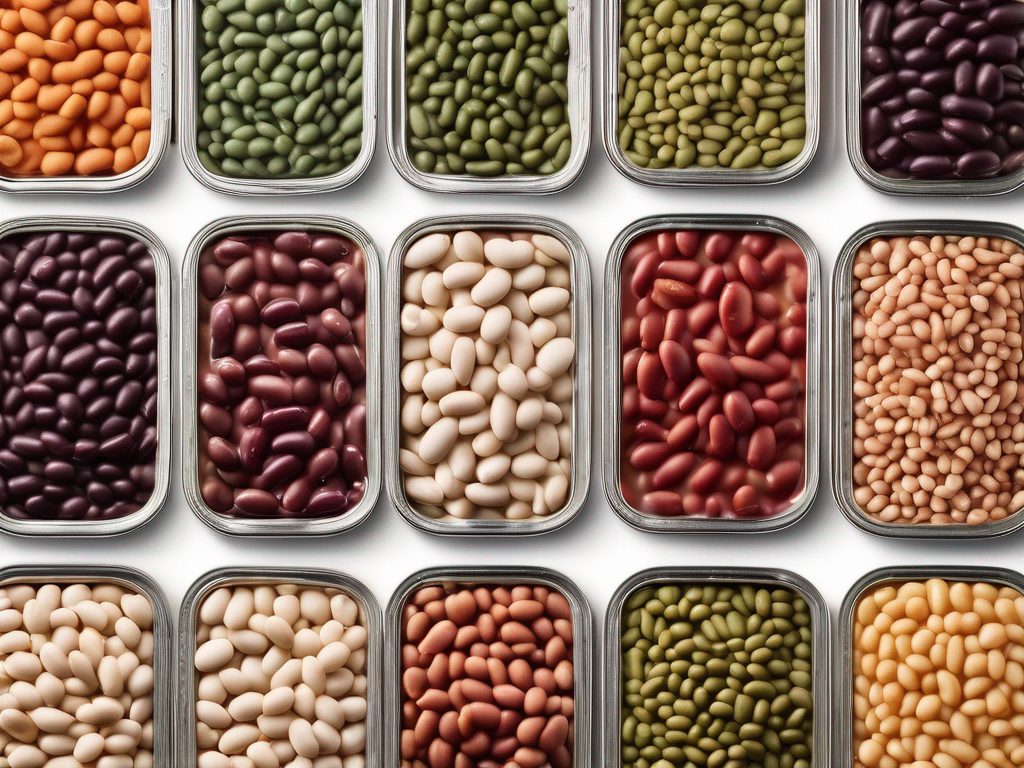
Tips for Preventing Mold on Leftover Canned Beans
Get Your Free Food Safety Cheat Sheet
30 most common foods with instant answers. Print it and stick it on your fridge—completely free!
Tips for Preventing Mold on Leftover Canned Beans
Canned beans are a convenient and nutritious pantry staple that can be used in a variety of dishes, from soups and stews to salads and dips. However, once opened, leftover canned beans can be susceptible to mold growth if not stored properly. Mold is a type of fungus that thrives in warm, moist environments and can pose health risks if consumed. To ensure the safety of your leftover canned beans and prevent mold growth, follow these tips: (Canned beans)
Understanding Mold Growth on Canned Beans
Before diving into the prevention tips, it's essential to understand why mold can develop on leftover canned beans. Canned beans are a low-acid food that is processed and sealed in a can to prevent spoilage. However, once the can is opened, the beans come into contact with air and moisture, creating an ideal environment for mold to grow. Mold spores are everywhere in the environment and can easily contaminate food if given the opportunity.
Factors that Contribute to Mold Growth on Canned Beans:
- Exposure to air and moisture
- Improper storage temperature
- Length of time stored in the refrigerator
Tips for Preventing Mold on Leftover Canned Beans
1. Transfer Leftover Canned Beans to an Airtight Container
- Once you open a can of beans, transfer any leftovers to a clean, airtight container. This will help prevent air and moisture from reaching the beans, reducing the risk of mold growth.
2. Store Canned Beans in the Refrigerator
- To prolong the shelf life of leftover canned beans, store them in the refrigerator at temperatures below 40°F (4°C). Cold temperatures slow down the growth of mold and bacteria, helping to keep the beans fresh for longer.
3. Use Leftover Canned Beans Within 3-4 Days
- It's essential to consume leftover canned beans within 3-4 days of opening the can. After this time, the beans may start to spoil, increasing the risk of mold growth. Label the container with the date to track how long the beans have been stored.
4. Check for Signs of Mold Before Consumption
- Before using leftover canned beans in a recipe, visually inspect them for any signs of mold. Mold can appear as fuzzy spots, discoloration, or a musty smell. If you notice any mold growth, discard the beans immediately.
5. Avoid Cross-Contamination
- When handling leftover canned beans, make sure to use clean utensils and wash your hands thoroughly before and after touching the beans. Cross-contamination can introduce mold spores to the beans, increasing the risk of spoilage.
Conclusion
By following these tips for preventing mold on leftover canned beans, you can ensure the safety and quality of your food. Proper storage, timely consumption, and good hygiene practices are key to minimizing the risk of mold growth on canned beans. Remember to always inspect your food before consumption and discard any items that show signs of spoilage. With these preventive measures in place, you can enjoy your canned beans without worrying about mold contamination. [Canned beans](/food/canned beans) are a versatile ingredient that can add flavor and nutrition to your meals, so make the most of them by storing them properly and using them in a timely manner. (Canned beans)
Related Posts
Here are some other articles you might find helpful:
Authoritative Food Safety References
These agencies and university labs inform every tip and health precaution we publish.
USDA FoodKeeper – Cold Storage Guidelines
Official refrigerator, freezer, and pantry timelines maintained by the U.S. Department of Agriculture.
Visit USDA FoodKeeperFDA Produce Safety Rule & Grower Guidance
Field-to-fridge handling practices that prevent contamination of fruits, vegetables, and leafy greens.
Visit FDA Produce SafetyCDC Foodborne Illness Prevention Hub
Surveillance-backed guidance on pathogens, symptoms, and steps to reduce foodborne illness risk.
Visit CDC Food SafetyUC Davis Postharvest Technology Center
University research detailing optimal storage atmospheres for produce after harvest.
Visit UC Davis PostharvestPenn State Extension – Home Food Preservation & Safety
Peer-reviewed extension bulletins on safe canning, chilling, and reheating practices.
Visit Penn State ExtensionGet Your Free Food Safety Cheat Sheet
30 most common foods with instant answers. Print it and stick it on your fridge—completely free! Want more? Upgrade to the complete guide with 70+ foods.
Scan your food directly and get instant safety info using our AI-powered camera feature.